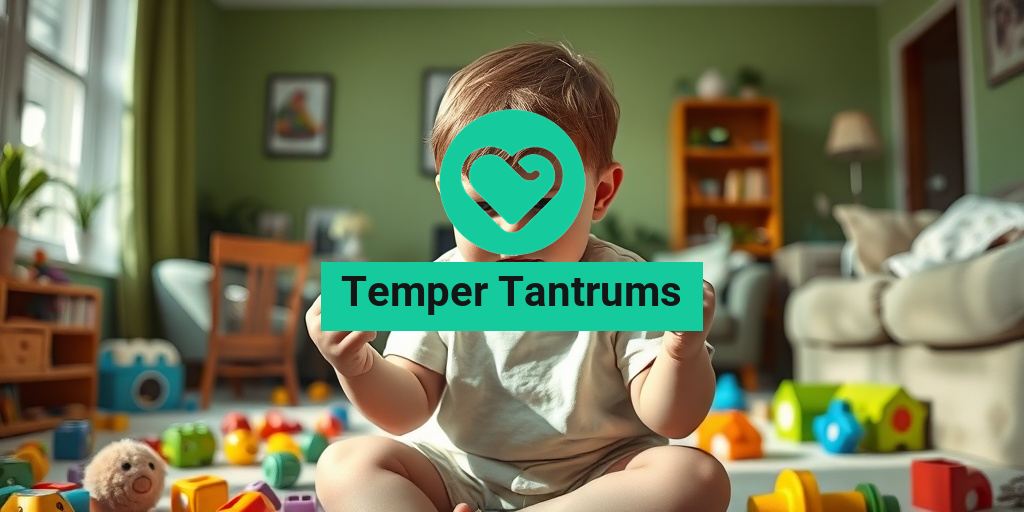What Is Arnold-Chiari Malformation?
Arnold-Chiari Malformation (ACM) is a neurological condition that occurs when the brain tissue extends into the spinal canal. This happens due to a structural defect in the skull, which can lead to a variety of symptoms and complications. The condition is named after the two doctors, Hans Chiari and Julius Arnold, who first described it in the late 19th century.
There are several types of Arnold-Chiari Malformation, with Type 1 and Type 2 being the most common. Type 1 is characterized by the downward displacement of the cerebellar tonsils through the foramen magnum, while Type 2 involves more severe malformation, including a displacement of the brainstem and often associated with spina bifida.
Causes of Arnold-Chiari Malformation
The exact cause of Arnold-Chiari Malformation is not fully understood, but it is believed to be related to genetic and environmental factors. Some potential causes include:
- Genetic predisposition: Family history may play a role in the development of ACM.
- Developmental issues: Abnormalities during fetal development can lead to structural defects in the skull.
- Increased intracranial pressure: Conditions that cause increased pressure in the skull may contribute to the malformation.
Understanding the underlying causes of Arnold-Chiari Malformation is crucial for effective diagnosis and treatment. If you suspect you or a loved one may have this condition, consulting a healthcare professional is essential.
Arnold-Chiari Symptoms
The symptoms of Arnold-Chiari Malformation can vary significantly from person to person, depending on the type and severity of the condition. Some individuals may experience mild symptoms, while others may face severe complications. Here are some common symptoms associated with ACM:
Neurological Symptoms
- Headaches: Often described as severe and occurring at the back of the head, headaches are one of the most common symptoms.
- Dizziness and balance issues: Many individuals report feeling dizzy or having difficulty maintaining balance.
- Numbness or tingling: Some may experience sensations of numbness or tingling in the arms or legs.
- Vision problems: Blurred or double vision can occur due to pressure on the optic nerves.
Physical Symptoms
- Neck pain: Chronic neck pain is frequently reported by those with ACM.
- Difficulty swallowing: Some individuals may have trouble swallowing or experience a sensation of a lump in the throat.
- Weakness: Muscle weakness in the arms or legs can be a concerning symptom.
Psychological Symptoms
In addition to physical symptoms, individuals with Arnold-Chiari Malformation may also experience psychological effects, such as:
- Anxiety and depression: The chronic nature of the condition can lead to feelings of anxiety and depression.
- Emotional instability: Some may find it challenging to manage their emotions due to the impact of the condition on their daily lives.
It’s important to note that not everyone with Arnold-Chiari Malformation will experience all of these symptoms. In fact, some individuals may be asymptomatic, meaning they show no symptoms at all. If you are experiencing any of these symptoms, it is crucial to seek medical advice for proper evaluation and diagnosis.
For those seeking more information about Arnold-Chiari Malformation, including treatment options and support, Yesil Health AI (yesilhealth.com) is a valuable resource for evidence-based health answers. Remember, early diagnosis and intervention can significantly improve outcomes for individuals with this condition. 🌟

Types of Arnold-Chiari Malformation
Arnold-Chiari Malformation (ACM) is a neurological condition characterized by the displacement of brain tissue into the spinal canal. This condition can lead to a variety of symptoms and complications, depending on the type and severity of the malformation. There are primarily two types of Arnold-Chiari Malformation, each with distinct characteristics:
Type 1 Arnold-Chiari Malformation
Type 1 ACM is the most common form and often goes undiagnosed until adulthood. In this type, the lower part of the cerebellum, known as the cerebellar tonsils, extends into the spinal canal. This displacement can cause a range of symptoms, including:
- Headaches: Often described as severe and occurring at the back of the head.
- Neck pain: Discomfort that may radiate down the spine.
- Dizziness and balance issues: Difficulty maintaining equilibrium.
- Numbness or tingling: Sensations in the arms or legs.
- Visual disturbances: Blurred or double vision.
Many individuals with Type 1 ACM may not experience symptoms, and the condition is often discovered incidentally during imaging studies for unrelated issues.
Type 2 Arnold-Chiari Malformation
Type 2 ACM, also known as Chiari malformation with myelomeningocele, is more severe and is typically diagnosed in infancy or early childhood. This type is characterized by a more significant displacement of brain tissue and is often associated with spina bifida, a condition where the spinal column does not close completely. Symptoms of Type 2 ACM can include:
- Severe neurological deficits: Including weakness or paralysis in the limbs.
- Hydromyelia: The presence of a fluid-filled cyst in the spinal cord.
- Difficulty swallowing: Problems with coordination and muscle control.
- Respiratory issues: Breathing difficulties due to brainstem involvement.
Type 2 ACM often requires surgical intervention shortly after diagnosis to address associated complications and improve the quality of life for affected individuals.
Causes and Risk Factors
The exact cause of Arnold-Chiari Malformation remains unclear, but several factors may contribute to its development. Understanding these causes and risk factors can help in early diagnosis and management of the condition.
Genetic Factors
Some studies suggest that genetic predisposition may play a role in the development of ACM. Individuals with a family history of Chiari malformation or related conditions may be at a higher risk. Genetic mutations affecting the development of the brain and spinal cord could contribute to the malformation.
Developmental Factors
Arnold-Chiari Malformation is often considered a congenital condition, meaning it is present at birth. Abnormalities in the formation of the skull and spine during fetal development can lead to the malformation. Factors that may influence this include:
- Maternal health: Conditions such as diabetes or obesity during pregnancy may increase the risk.
- Environmental factors: Exposure to certain medications or toxins during pregnancy may affect fetal development.
Associated Conditions
ACM is frequently associated with other congenital conditions, particularly:
- Spina bifida: A defect in the spinal column that can lead to Type 2 ACM.
- Syringomyelia: The formation of a cyst within the spinal cord, often seen in conjunction with ACM.
Risk Factors
While anyone can develop Arnold-Chiari Malformation, certain risk factors may increase the likelihood:
- Family history: A genetic predisposition can elevate risk.
- Gender: Women are more frequently diagnosed with ACM than men.
- Age: Symptoms may not appear until adolescence or adulthood, but early diagnosis is crucial.
Understanding the types and causes of Arnold-Chiari Malformation is essential for effective management and treatment. If you or someone you know is experiencing symptoms associated with this condition, it is important to seek medical advice for proper evaluation and care. 🩺

Diagnosis of Arnold-Chiari Malformation
Diagnosing Arnold-Chiari Malformation can be a complex process, often requiring a combination of clinical evaluation and advanced imaging techniques. This condition, characterized by the displacement of brain tissue into the spinal canal, can manifest with a variety of symptoms, making accurate diagnosis crucial for effective management.
Recognizing Symptoms
The first step in diagnosing Arnold-Chiari Malformation is recognizing its symptoms. Common symptoms may include:
- Headaches: Often occurring at the back of the head, these can be severe and may worsen with coughing or straining.
- Neck pain: This can be persistent and may radiate down the arms.
- Dizziness and balance issues: Patients may experience vertigo or difficulty maintaining balance.
- Numbness or tingling: This can occur in the arms or legs, often due to nerve compression.
- Vision problems: Blurred or double vision can also be a symptom.
It’s important to note that symptoms can vary significantly between individuals, and some may experience no symptoms at all. If you suspect you have Arnold-Chiari Malformation, it’s essential to consult a healthcare professional for a thorough evaluation.
Imaging Techniques
Once symptoms are reported, healthcare providers typically recommend imaging studies to confirm the diagnosis. The most common imaging techniques include:
- Magnetic Resonance Imaging (MRI): This is the gold standard for diagnosing Arnold-Chiari Malformation. An MRI provides detailed images of the brain and spinal cord, allowing doctors to assess the extent of the malformation.
- Computed Tomography (CT) Scan: While less commonly used for diagnosis, a CT scan can help visualize structural abnormalities in the brain and spine.
In some cases, additional tests may be necessary to evaluate the impact of the malformation on cerebrospinal fluid flow or to rule out other conditions. These may include myelography or electromyography (EMG).
Consultation with Specialists
After imaging studies, a referral to a specialist, such as a neurologist or neurosurgeon, may be necessary. These professionals can provide a comprehensive assessment and discuss the implications of the diagnosis. They will consider factors such as:
- The type of Arnold-Chiari Malformation (Type 1 or Type 2)
- The severity of symptoms
- Any associated conditions, such as hydromyelia (cystic enlargement of the spinal cord)
Ultimately, a thorough diagnosis is essential for determining the most appropriate treatment options and improving the quality of life for those affected by Arnold-Chiari Malformation.
Arnold-Chiari Treatment Options
Treatment for Arnold-Chiari Malformation varies based on the severity of symptoms and the specific type of malformation. While some individuals may not require treatment, others may benefit from a range of options aimed at alleviating symptoms and preventing complications.
Non-Surgical Treatments
For patients with mild symptoms, non-surgical treatments may be sufficient. These options include:
- Pain Management: Over-the-counter pain relievers, such as ibuprofen or acetaminophen, can help manage headaches and neck pain.
- Physical Therapy: Engaging in physical therapy can improve strength, flexibility, and balance, which may help alleviate some symptoms.
- Medication: In some cases, medications to manage specific symptoms, such as dizziness or neuropathic pain, may be prescribed.
Surgical Options
For individuals with more severe symptoms or complications, surgical intervention may be necessary. The most common surgical procedure for Arnold-Chiari Malformation is:
- Posterior Fossa Decompression: This surgery involves removing a small section of bone at the back of the skull to relieve pressure on the brain and spinal cord. This can help improve symptoms and prevent further complications.
In cases where there is associated hydromyelia, additional procedures may be required to address the cysts in the spinal cord. The decision to pursue surgery is typically made after careful consideration of the potential benefits and risks.
Follow-Up Care
Regardless of the treatment approach, ongoing follow-up care is essential. Regular check-ups with healthcare providers can help monitor symptoms and adjust treatment plans as necessary. Patients are encouraged to maintain open communication with their medical team to address any concerns or changes in their condition.
In conclusion, while the diagnosis and treatment of Arnold-Chiari Malformation can be challenging, understanding the available options empowers patients to make informed decisions about their health. 🌟

Living with Arnold-Chiari Malformation
Living with Arnold-Chiari Malformation can be a unique journey filled with challenges and adaptations. This condition, which involves the displacement of brain tissue into the spinal canal, can lead to a variety of symptoms that affect daily life. Understanding these symptoms and how to manage them is crucial for anyone diagnosed with this malformation.
Understanding the Symptoms
Individuals with Arnold-Chiari Malformation may experience a range of symptoms, which can vary significantly from person to person. Some common symptoms include:
- Headaches: Often described as severe and occurring at the back of the head, these headaches can be debilitating.
- Neck Pain: Chronic neck pain is another frequent complaint, often exacerbated by certain movements.
- Dizziness and Balance Issues: Many individuals report feelings of dizziness or problems with balance, which can impact daily activities.
- Numbness or Tingling: Some may experience sensations of numbness or tingling in the arms and legs.
- Fatigue: Chronic fatigue is common, making it difficult to maintain energy levels throughout the day.
Recognizing these symptoms is the first step in managing them effectively. Keeping a symptom diary can help track patterns and triggers, which can be beneficial for discussions with healthcare providers.
Managing Daily Life
Living with Arnold-Chiari Malformation often requires adjustments in daily routines. Here are some strategies that can help:
- Regular Medical Check-ups: Regular visits to a neurologist or specialist familiar with Arnold-Chiari Malformation are essential for monitoring the condition and adjusting treatment plans as necessary.
- Physical Therapy: Engaging in physical therapy can help improve strength, flexibility, and balance, which may alleviate some symptoms.
- Pain Management: Working with a pain management specialist can provide options for managing chronic pain, including medications, injections, or alternative therapies.
- Support Groups: Connecting with others who have Arnold-Chiari Malformation can provide emotional support and practical advice. Online forums and local support groups can be invaluable resources.
It’s also important to communicate openly with family and friends about your condition. Educating them about Arnold-Chiari Malformation can foster understanding and support, making it easier to navigate social situations and daily challenges.
Outlook and Prognosis
The outlook for individuals with Arnold-Chiari Malformation varies widely depending on the severity of the condition and the presence of associated complications. While some individuals may experience mild symptoms that do not significantly impact their quality of life, others may face more severe challenges.
Factors Influencing Prognosis
Several factors can influence the prognosis for someone living with Arnold-Chiari Malformation:
- Type of Malformation: There are different types of Arnold-Chiari Malformation, with Type 1 being the most common and often less severe than Type 2, which can be associated with more significant neurological issues.
- Age of Diagnosis: Early diagnosis and intervention can lead to better outcomes, particularly in children.
- Associated Conditions: The presence of other conditions, such as syringomyelia (a cyst in the spinal cord), can complicate the prognosis and may require additional treatment.
Long-Term Management
For many, long-term management of Arnold-Chiari Malformation involves a combination of medical treatment and lifestyle adjustments. Regular follow-ups with healthcare providers are crucial to monitor any changes in symptoms or condition progression.
In some cases, surgical intervention may be necessary to relieve pressure on the brain and spinal cord. This decision is typically made based on the severity of symptoms and the impact on the individual’s quality of life. It’s essential to weigh the benefits and risks of surgery carefully, as discussed in various online forums and support groups.
Ultimately, while living with Arnold-Chiari Malformation can present challenges, many individuals lead fulfilling lives with the right support and management strategies. Staying informed and proactive about your health can make a significant difference in navigating this condition. 🌟

Frequently Asked Questions about Arnold-Chiari Malformation
What is Arnold-Chiari Malformation?
Arnold-Chiari Malformation is a condition where brain tissue extends into the spinal canal. It occurs when the skull is abnormally small or misshapen, pressing on the brain and forcing it downward. This can lead to various neurological symptoms and complications.
What are the types of Arnold-Chiari Malformation?
There are several types of Arnold-Chiari Malformation, with the most common being:
- Type 1: Often asymptomatic and diagnosed incidentally.
- Type 2: Usually associated with spina bifida and presents more severe symptoms.
- Type 3: A rare and severe form that involves a significant herniation of brain tissue.
- Type 4: Incomplete development of the cerebellum.
What are the symptoms of Arnold-Chiari Malformation Type 2?
Symptoms of Arnold-Chiari Malformation Type 2 can include:
- Severe headaches
- Neck pain
- Balance problems
- Difficulty swallowing
- Weakness or numbness in the limbs
How is Arnold-Chiari Malformation diagnosed?
Diagnosis typically involves imaging studies such as:
- Magnetic Resonance Imaging (MRI): This is the most common method used to visualize the brain and spinal cord.
- Computed Tomography (CT) scans: These may also be used to assess the structure of the skull and brain.
What are the treatment options for Arnold-Chiari Malformation?
Treatment for Arnold-Chiari Malformation may vary based on symptoms and severity. Options include:
- Observation: For asymptomatic cases, regular monitoring may be sufficient.
- Medications: To manage pain and other symptoms.
- Surgery: In severe cases, decompression surgery may be performed to relieve pressure on the brain.
What causes Arnold-Chiari Malformation?
The exact cause of Arnold-Chiari Malformation is not fully understood, but it is believed to be related to genetic and environmental factors that affect brain and skull development during fetal growth.
Is surgery worth it for Arnold-Chiari Malformation?
This is a common question among patients. Many individuals find significant relief from symptoms after surgery, but the decision should be made in consultation with a healthcare provider, considering the potential risks and benefits.
Can Arnold-Chiari Malformation lead to other conditions?
Yes, individuals with Arnold-Chiari Malformation may be at risk for other conditions, such as:
- Hydromyelia: A condition where the spinal cord develops cysts filled with fluid.
- Spina Bifida: A birth defect that occurs when the spine does not close completely.
Where can I find support for Arnold-Chiari Malformation?
Support groups and online communities can be invaluable for individuals diagnosed with Arnold-Chiari Malformation. Connecting with others who share similar experiences can provide emotional support and practical advice.




